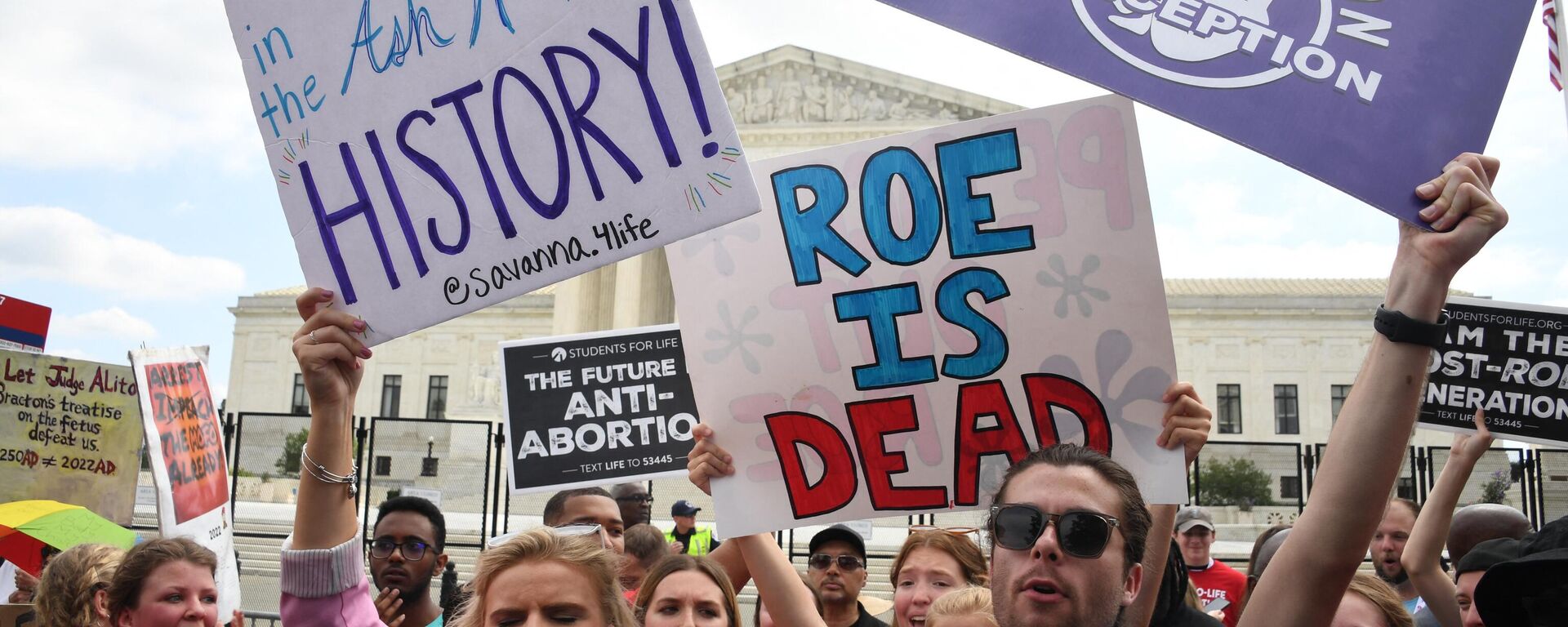What of States’ Rights? Lindsey Graham Introduces Bill for Nationwide 15-Week Abortion Ban

© AP Photo / Susan Walsh
Subscribe
The June overturning of federal abortion rights by the Supreme Court was the culmination of years of conservative opposition, which argued the issue of legality should be left to individual states. However, with roughly half of US states continuing to defend abortion access, their effort to ban the practice has now extended to the federal level.
Republicans expanded their offensive against the right of pregnant people to terminate their pregnancy early on Tuesday, as US Sen. Lindsey Graham (R-SC) introduced a bill in the US Senate to ban abortion after 15 weeks of gestation.
“I think we should have a law at the federal level that would say, after 15 weeks, no abortion on demand except in cases of rape, incest or to save the life of the mother,” Graham told reporters. “And that should be where America is at.”
The bill’s title refers to such abortions as “late-term,” which previously referred to abortions during the third trimester, when the viability of the fetus outside the womb becomes much higher. At 15 weeks, however, the fetus is just 3 inches long and weighs about 70 grams.
“15 weeks is not ‘late term,’ particularly given the significant challenges to access around the country,” tweeted Christina Reynolds, vice president of communications at Emily’s List, a political action committee that backs pro-abortion female candidates. “And let's be clear: this is their first step to a full ban.”
Before the Supreme Court’s June decision in Dobbs vs. Jackson, abortion access was a nationwide right, thanks to a previous decision by the high court in 1973 that found getting an abortion to be part of the right to privacy. However, the Dobbs decision overturned that, claiming the previous ruling had overstepped its bounds constitutionally, and that the right was not one deeply entrenched in the foundations of US society.
US popular opinion tells a different story, though: polls conducted in June showed that strong majorities of Americans both support abortion being legal and opposed the Supreme Court’s ruling.
White House spokesperson Karine Jean-Pierre similarly rejected Graham’s assertion, saying on Tuesday that the proposed 15-week ban is “wildly out of step with what Americans believe.”
“President Biden and congressional Democrats are committed to restoring the protections of Roe v. Wade in the face of continued radical steps by elected Republicans to put personal health care decisions in the hands of politicians instead of women and their doctors, threatening women’s health and lives,” she added.
US President Joe Biden, once an opponent of abortion, has endorsed the Democrats’ Women’s Health Protection Act (WHPA), which would enshrine the right to abortion access in federal law, but the bill has so far failed to get past an unbreakable Republican filibuster in the Senate.
Similarly, Graham’s bill stands no chance of getting passed by either chamber of Congress, in which Democrats have majorities. However, Republicans have made clear the bill will be a priority if they win majorities in Congress in the November elections.
In the wake of the Dobbs ruling, 26 US states have either banned abortion outright or moved to heavily restrict it, including with “trigger laws” and the reactivation of historic abortion bans left on the books. Abortion proponents have fought the issue out in local courts across the country, scoring an important victory in Kansas in early August when a referendum that would have paved the way for banning abortion in the Great Plains state was roundly rejected.
On the other hand, 16 states where Democrats hold sway have moved to further protect abortion access, including accommodating “refugees” from states where it is banned.


